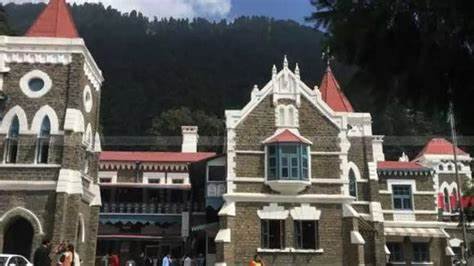The Supreme Court has stayed an order issued by the Uttarakhand High Court, mandating its relocation from Nainital. The decision has ignited discussions regarding the administrative autonomy of high courts and the preservation of judicial heritage, all against the backdrop of Uttarakhand’s scenic hill station, Nainital.
The Uttarakhand High Court, situated in the picturesque town of Nainital, has long been an emblem of the state’s judicial landscape. Its location amid the serene surroundings of the Himalayan foothills has lent it a unique charm and historical significance. However, a recent order by the High Court administration to relocate the court’s principal seat to a more central location has sparked controversy and drawn criticism from various quarters.
The decision to relocate the High Court stems from logistical and infrastructural challenges associated with operating from Nainital. Issues such as limited connectivity, inadequate facilities for litigants and legal professionals, and the remoteness of the location have been cited as reasons for the proposed move. Proponents argue that relocating the court to a more accessible and urbanized area would enhance efficiency and accessibility, thereby improving the administration of justice.
However, opponents of the relocation argue that the move undermines the historical and cultural significance of Nainital as a judicial center. The town has been synonymous with the Uttarakhand High Court since its inception, and its scenic backdrop has inspired generations of jurists and litigants. The court’s relocation would not only sever its ties with Nainital but also disrupt the local economy, which relies on the presence of the judiciary for livelihoods and tourism.
The Supreme Court’s decision to stay the Uttarakhand High Court’s relocation order comes as a relief to those who oppose the move. The stay order allows for a more comprehensive examination of the matter, taking into account various factors such as the logistical challenges, historical significance, and public sentiment associated with the court’s location.
The debate over the relocation of the Uttarakhand High Court reflects broader questions about the autonomy of high courts and the balance between administrative efficiency and historical preservation. High courts play a pivotal role in the administration of justice, and their autonomy is crucial to upholding the principles of judicial independence and impartiality. Any decision regarding their relocation must be carefully weighed against these principles.
Moreover, the issue also raises concerns about the preservation of judicial heritage in India. Historic courthouses and legal institutions are not just symbols of administrative authority but also repositories of legal history and tradition. Relocating them without adequate consideration for their historical and cultural significance risks erasing important aspects of India’s legal heritage.
The Supreme Court’s intervention in the matter underscores its role as the guardian of the Constitution and the protector of fundamental rights. By staying the Uttarakhand High Court’s relocation order, the apex court has provided an opportunity for a thorough examination of the issue, ensuring that all relevant factors are taken into account before a final decision is made.
Moving forward, it is imperative that all stakeholders engage in constructive dialogue to address the concerns raised by both sides of the debate. Finding a solution that balances the need for administrative efficiency with the preservation of judicial heritage is essential to upholding the integrity and credibility of India’s judicial system.
In addition, the Supreme Court’s decision to stay the Uttarakhand High Court’s order for its relocation from Nainital reflects the complexities inherent in the debate over the administrative autonomy of high courts and the preservation of judicial heritage. The issue underscores the need for a nuanced approach that takes into account the diverse interests and concerns involved, ensuring that any decision regarding the court’s location is guided by principles of justice, equity, and historical preservation.

